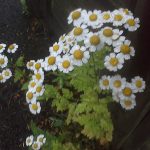
August sees the first signs of autumn with the first migrant birds departing our shores. One of the first and more obvious garden birds to leave are swifts and by the middle of the month most birds will have gone, their screaming calls no longer filling the air on warm summer evenings. Many of our resident birds meanwhile, enter a period of moulting at this time, in which they shed their breeding feathers and develop an often-drabber new plumage for the winter. This can be seen clearly in the case of starlings that develop an otherwise absent spangling of white spots over the winter months. To a certain extent moulting also involves a loss of some wing feathers making flight difficult and in a few species impossible. For this reason may birds lie low at this time of year, taking cover in trees and hedges and therefore remaining inconspicuous. On the other hand insect life is at its peak in August and on warmer days Wildflower gardens can be a hive of activity with hoverflies, ladybirds and if you have a pond dragonflies, pond skaters and water boatmen all very prominent. These habitats in turn provide a feed ground for bats, swallows, hedgehogs and foxes.
As summer progresses many plant species will be about to set seed before dying back for the winter. However, by cutting back dead stems and seed heads immediately after flowering, plants can be encouraged to produce more seed, thus prolonging their flowering season. Annuals such as poppies and cornflowers however, should be left to set seed naturally, followed by a light digging over of the soil in Autumn if a display is required next season.
Late flowering wildflowers, all of which will be in bloom this month, include Heather, Meadow Rue, Water Plantain, Wild Angelica, Nettle leaved bellflower, Sea Aster, Saw wort, Devils bit scabious, Fleabane, Gypsywort, Purple loosestrife and Meadow sweet.